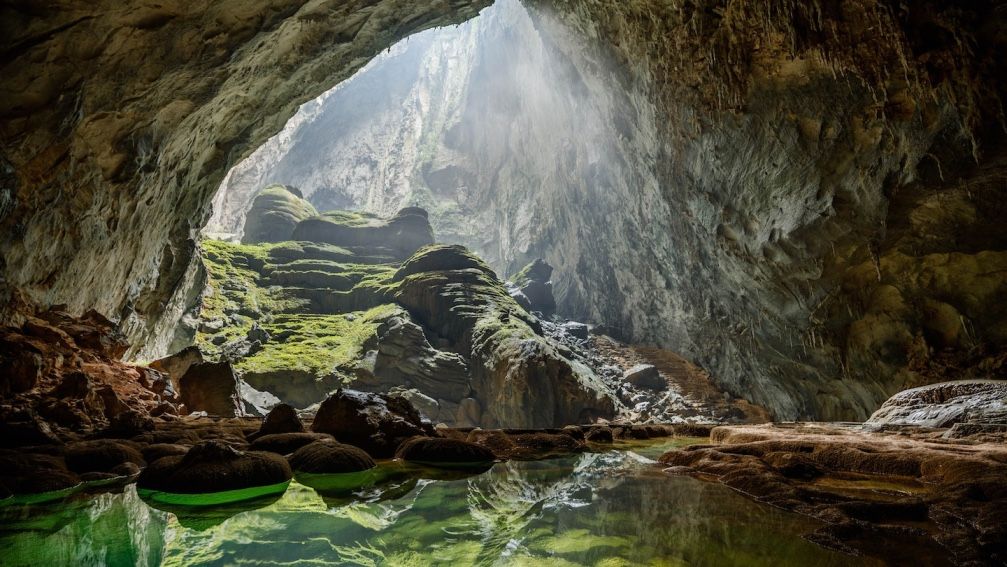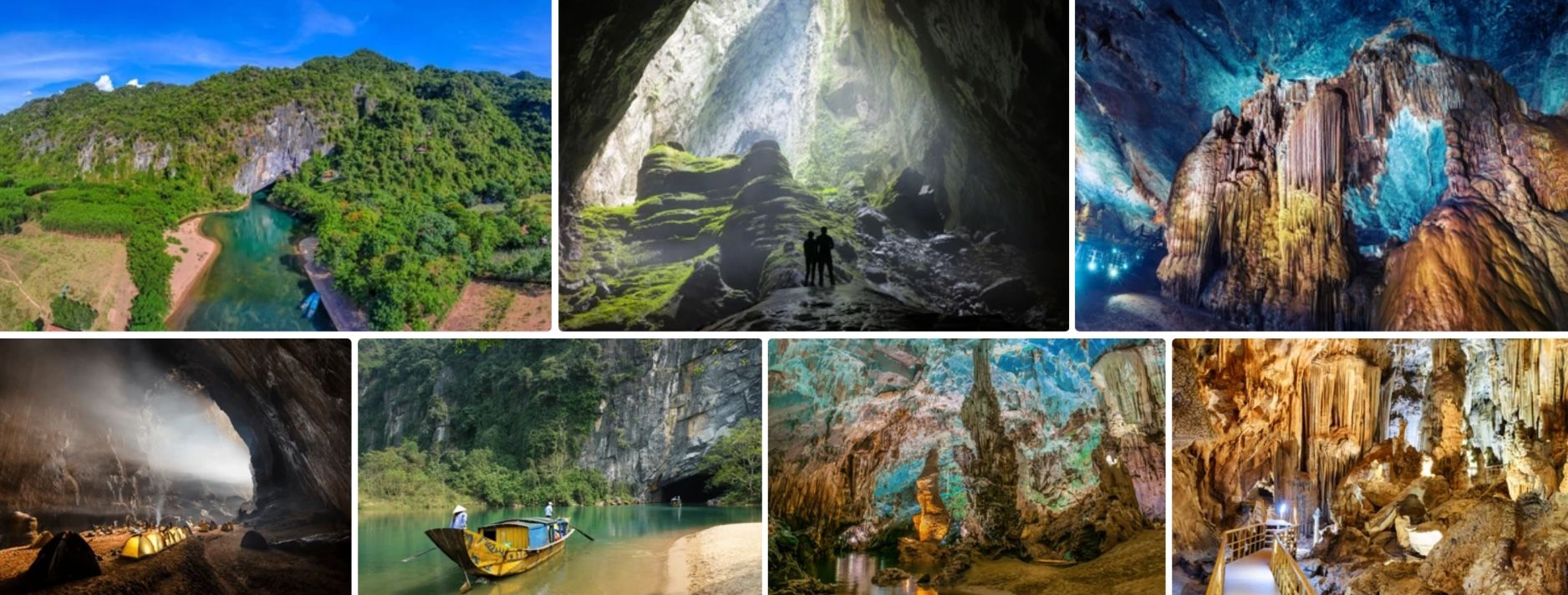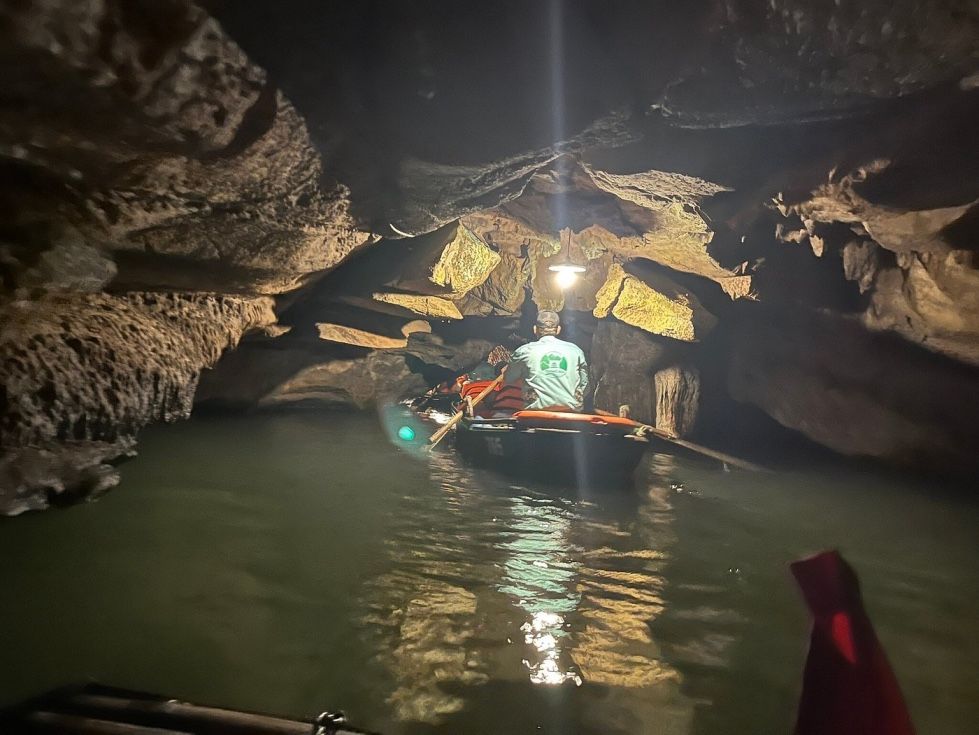12+ Famous Caves in Vietnam every explorer should visit
Caves in Vietnam are among the world awe-inspiring ones – That you may didn’t know, and actually, Vietnam is home to the world’s largest caves. The series of newly discovered caves sine early 90’s.
No matter what sort of holiday you’re looking after in Vietnam, if you’re an adventure seeker, or you’re a curious traveler planning for something out of ordinary, then keep read this post to find out more about best caves in Vietnam.
Immerse yourself in the best experiences Vietnam has to offer with our carefully designed trip that caters to the needs of most discerning travelers, check out Vietnam Tour Packages

12 Best Caves in Vietnam For An Awe-Inspiring Experience
1. Son Doong Cave
2. Phong Nha Cave
Although no pass is required, an entrance fee of 250,000 VND (approximately $11 USD) applies. The optimal time to visit falls during the dry season, from February to August. Visitors can access the cave through arranged tours departing from the nearby town of Dong Hoi, or from your homestay in Phong Nha village. Check out best time to visit Vietnam
3. Mua Cave (Not part of Phong Nha)
Located 100 km south of Hanoi in Ninh Binh, Mua Cave isn’t the biggest cave in Vietnam & even though its not part of the Phong Nha Ke Bang, however, lies a short 1.5-hour journey from the capital. It is possible to visit as a day trip from Hanoi, with numerous tour companies offering such excursions. Alternatively, one can hire a private taxi or travel by motorbike if preferred.

4. Paradise Cave (Động Thiên Đường)
Paradise Cave is one of the highlights of among the biggest caves in Vietnam.
The best time of the year to visit Paradise cave is months between November to March.
5. Hang En Cave
Hang En is considered by expeditors as one of the largest caves in the world. The widest entrance is about 200m, with a 145m high ceiling, and a height of 120m and width of 110m at the exit.

6. Dark Cave (Hang Tối)
Located in Phong Nha-Ke Bang National Park, Dark Cave offers a unique adventure that includes exploring its dark chambers with a head torch and enjoying mud baths. The cave is accessible by boat and requires an entrance fee of 450,000 VND, which covers the cave entrance, a boat ride into the cave, and a ride on the Chay River zipline—the longest zipline in Vietnam, which opened in 2014.
7. Hang Sung Sot (Surprise Caves)
Among the caves in Halong Bay Vietnam – Sung Sot Cave is renowned for its impressive stalactites and stalagmites, which form massive columns and create a cathedral-like interior with intricate formations illuminated for visitors.
Sung Sot Cave is actually one of the must-see caves in Vietnam, primarily due to its popularity as a stop on many Ha Long Bay overnight cruises. Visitors follow a designated route with a guide, and the experience can feel somewhat commercial; however, the cave’s sheer size remains strikingly impressive.
8. Trang An Grottoes : A popular Cave in northern Vietnam
Trang An presents a picturesque combination of mountains, valleys, Vietnam famous caves, pagodas, and rivers. Visitors can cruise through the caves, disembark at islands to visit pagodas, and appreciate the scenic beauty.

9. Thien Cung Cave, Halong Bay
Thien Cung Cave offers insights into Vietnamese storytelling culture, as local legend holds that it once served as the residence of the Dragon King.
10. Caves in Ba Be National Park
Several of these caves, including Puong Cave, can only be accessed by boat on the Nang River. These caves encircle Ba Be Lake, the largest natural freshwater lake in Vietnam, which supports a diverse ecosystem of aquatic and terrestrial species. The caves themselves host numerous endemic species, making the area a significant site for nature enthusiasts and biodiversity researchers.
Alternatively, one-day kayak tours, priced between $50 and $150 USD, include park entry and provide a guided exploration of the area. Check out trekking in Vietnam
11. Caves in Marble mountain, Danang
These caves are part of a network within five marble and limestone hills, each symbolising different elements of the universe. In addition to Am Phu Cave and Huyen Khong Cave, visitors can explore Hell Cave, Heaven Cave, and Tang Chon Cave, as well as several pagodas and viewpoints overlooking the city and coastline. Visitors can access Am Phu Cave from a ground-floor entrance, while the other caves and pagodas sit at the top of the mountain.

12. Thẩm Khách Cave in Lạng Sơn
Tham Khach Cave, a distinctive camping site in Lang Son, northern Vietnam, originally functioned as a military structure but is now abandoned. Within the cave, a vast plain exists, large enough to accommodate numerous vehicles, making it well-suited for camping.
This archaeological and scenic site is located in Binh Gia District, Lang Son Province, some 175km from the center of Hanoi, the cave remains dark and cold, containing remnants of wartime factories and military structures. The two side of the cave is accessible by concrete road that it a perfect pass for motorbike riders. Check out private motorbike tours in Vietnam
FAQ: Caves in Vietnam
What are the easiest caves to visit in Vietnam?
What is the name of a famous cave in Vietnam?
Where’s the biggest cave in Vietnam?
Hang Sơn Đoòng – Located in the core zone of Phong Nha – Ke Bang National Park, within 500km south of Hanoi, alongside the famous Ho Chi Minh Trail, is home to the biggest caves in Vietnam and in the world, Son Doong is a newly discovered cave, located in the heart of the Phong Nha Ke Bang National Park, in Central Vietnam.
How much does it cost to go to the biggest cave in Vietnam?
Are tourists allowed in Son Doong cave?
Yes sure. Tourists are allowed to explore Son Doong Cave under the packages tour that is exclusively operated by one tour organizer. In addition, Only 1,000 tourists allowed annually to experience the Son Doong Cave Vietnam.
Experience World largest, most famous caves in Vietnam
This guide aims to provide comprehensive information about the natural wonders and most famous caves in Vietnam, helping you identify those that may fit into your itinerary.
Vietnam is home to an impressive array of caves and rock formations. The listed caves represent some of the most famous grottoes and caverns options to consider exploring during your visit.




